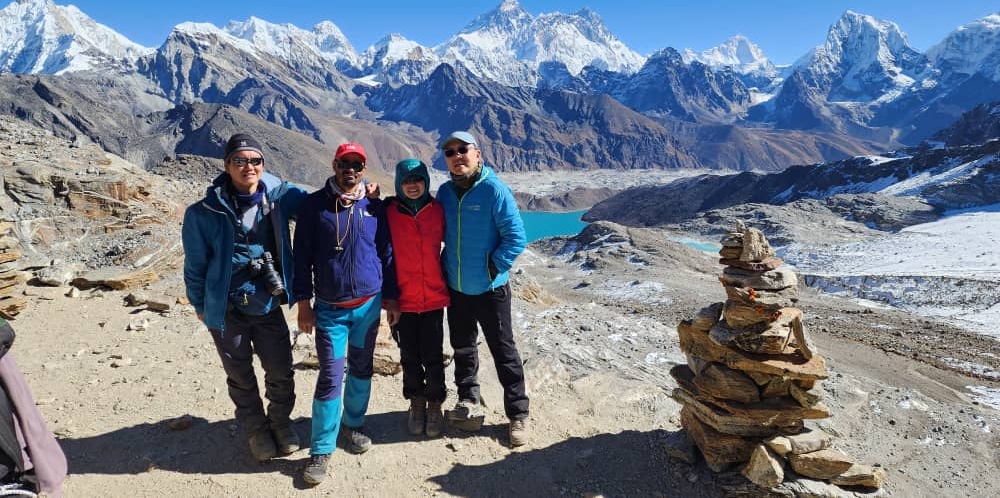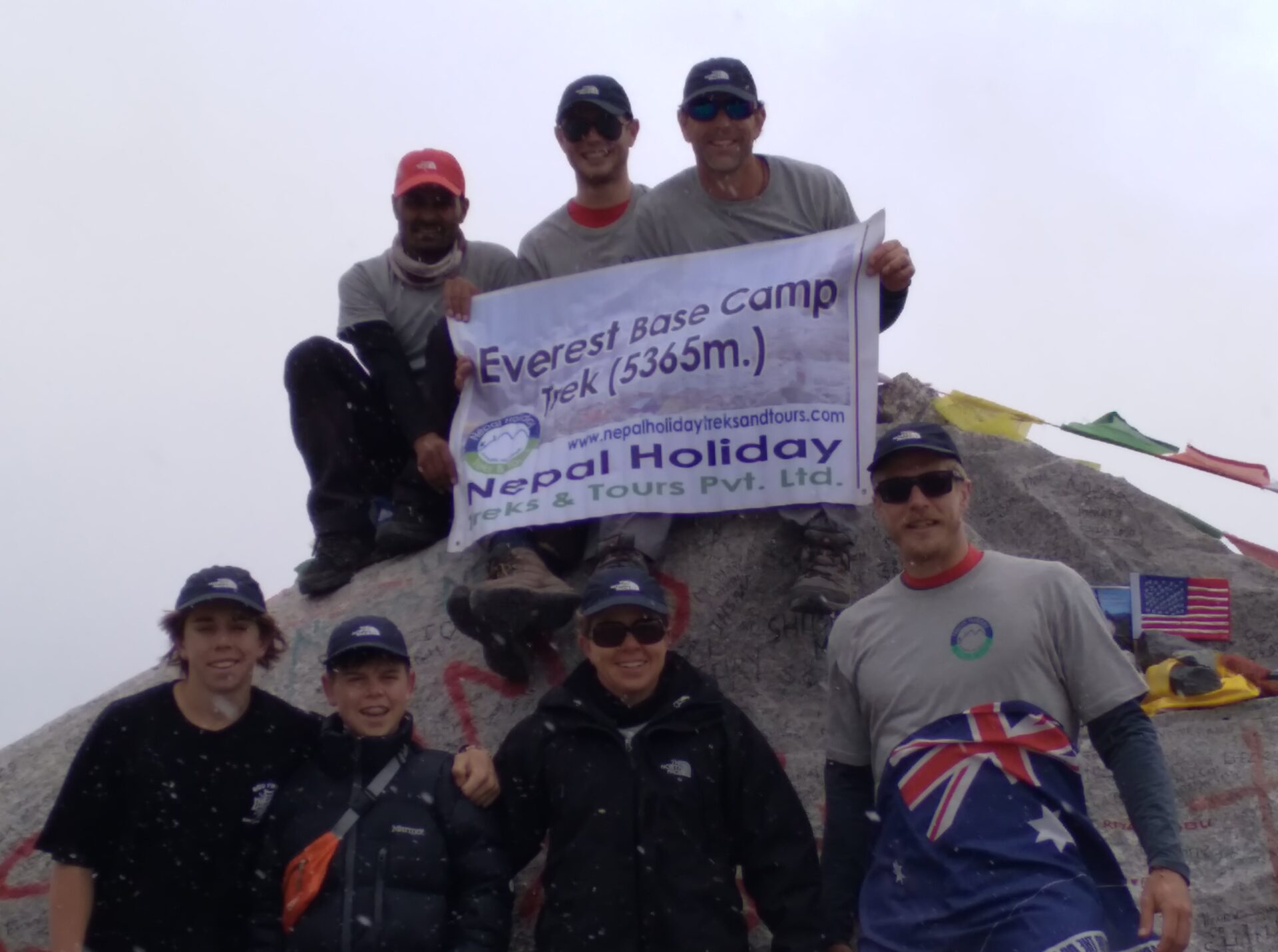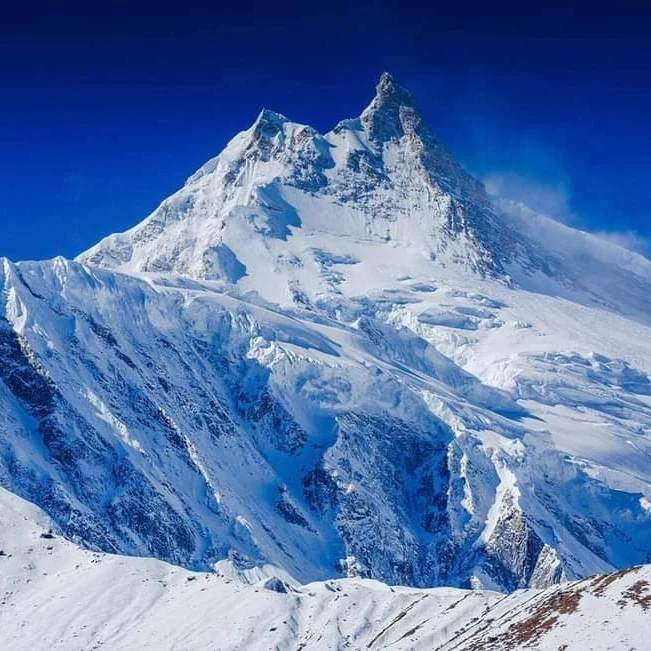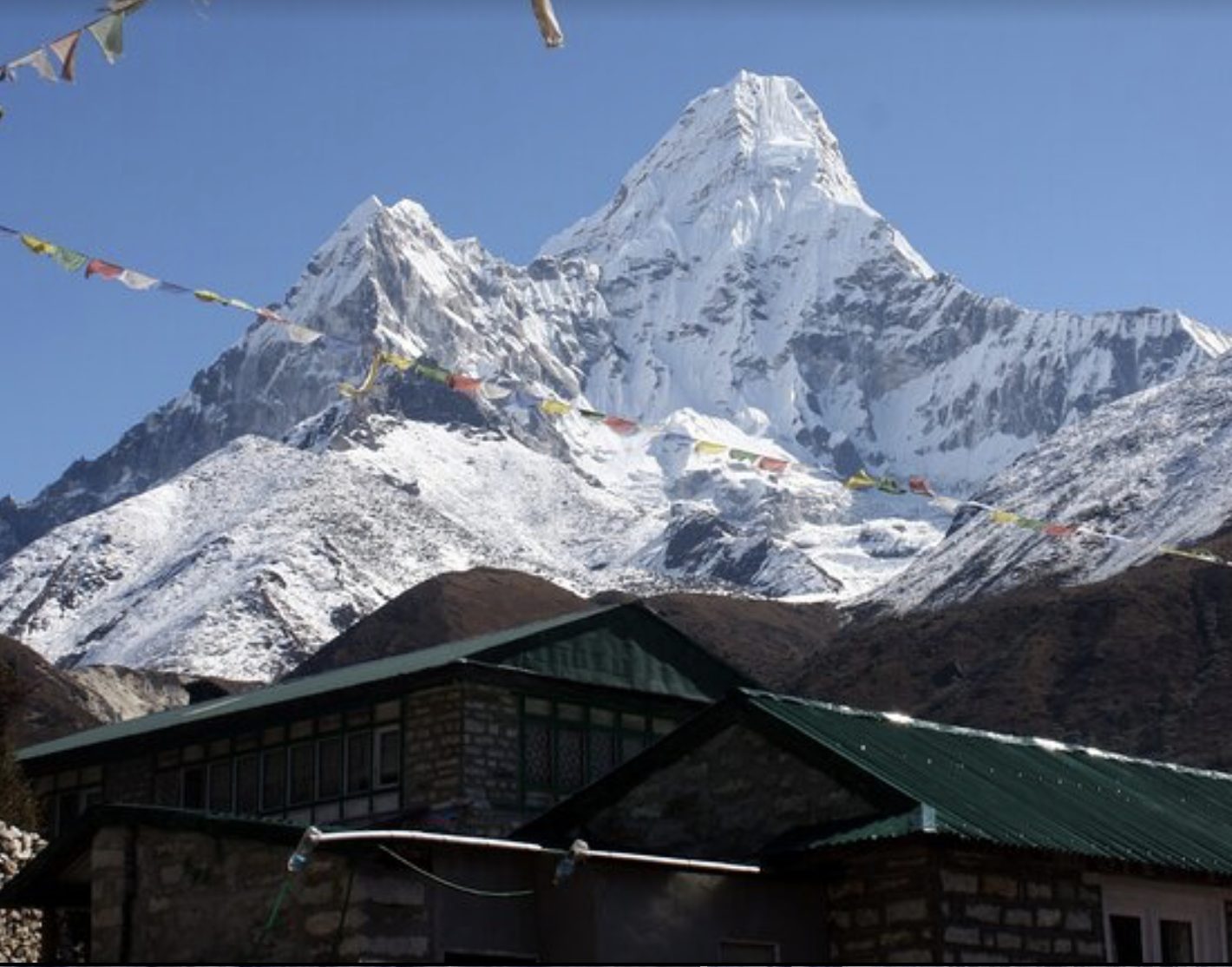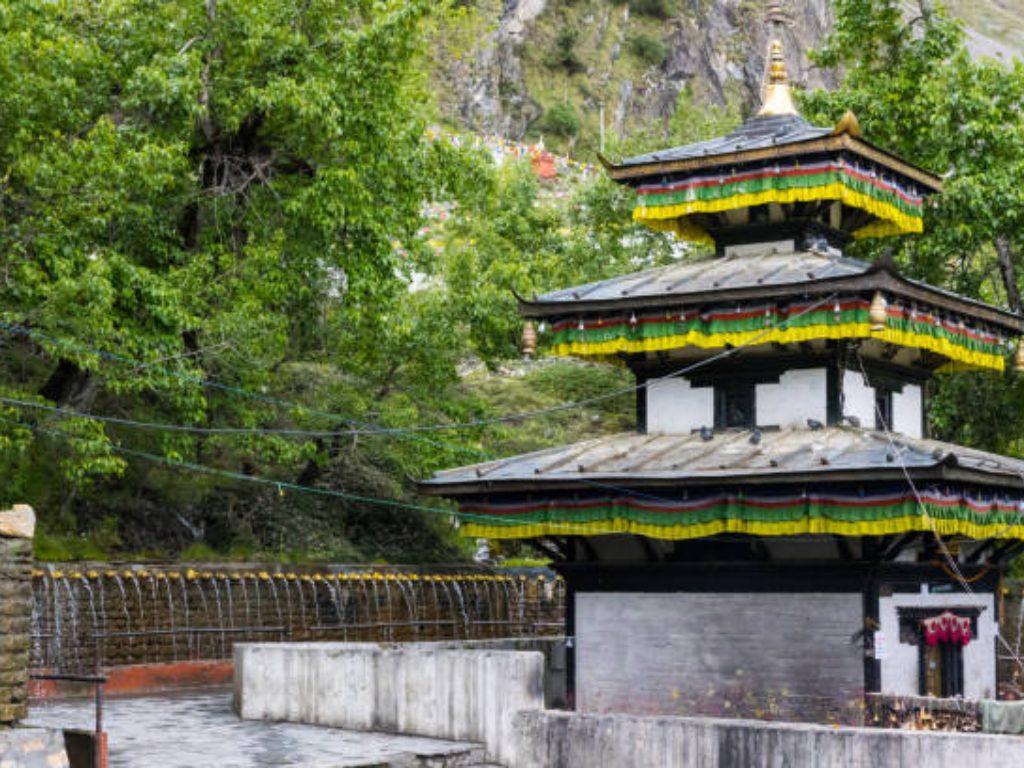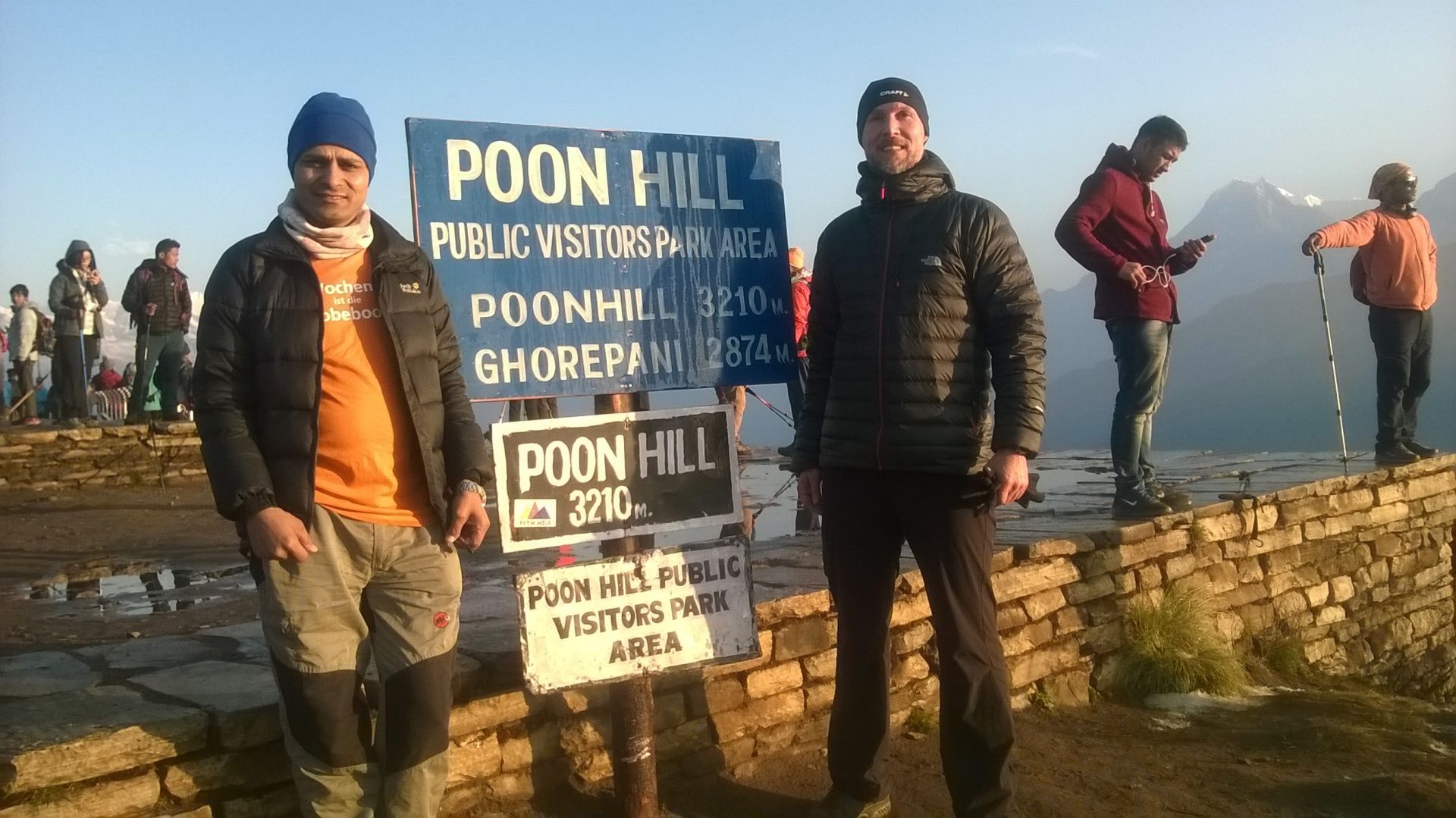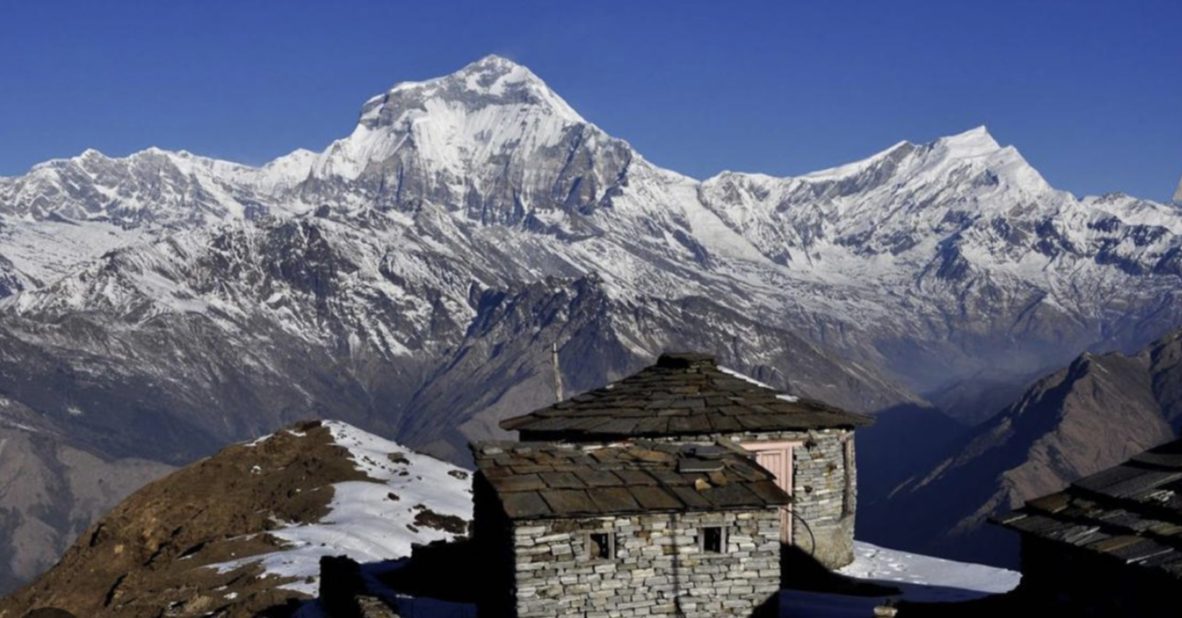Everest Three High Pass Trek From Salleri Overview
Everest Three High Pass Trek From Salleri
The Everest Three Passes Trek from Salleri is one of the most beautiful and rewarding hikes in the Himalayas. Starting from Salleri (2,362m), the trekking passes through the spectacular landscape of the Everest region, to Everest Base Camp (5,364m) and descending to Lukla (2,880m). This 166 km (103-mile) trek offers unbeatable alpine beauty, migrating glaciers, and traditional Sherpa settlements. Along the way, trekkers will be regaled with breathtaking views of Mount Everest (8,848.86m), Mount Lhotse (8,516m), Mount Ama Dablam (6,812m), Mount Nuptse (7,861m), and Mount Thamserku (6,608m) amid a host of iconic peaks. Trekkers will also catch sight of the native Himalayan fauna, such as the Himalayan tahr, snow leopard, and Nepal’s national bird, the Danphe (Himalayan Monal).
The most thrilling aspect of this trek is the crossing of the three high passes: Kongma La Pass (5,535m), Cho La Pass (5,420m), and Renjo La Pass (5,360m). Each pass presents a challenge of its own, from crossing glacial moraines to climbing steep rocky trails, with each one offering breathtaking panoramic vistas. The Everest Base Camp (5,364m) trek allows trekkers to be based at the foot of the world’s highest mountain, where mountaineers prepare for their final ascent to the top. The trek also offers cultural experience in the heart of the Sherpa homeland, with visits to Namche Bazaar (3,440m), tours of monasteries centuries old, and the hospitality of the Sherpa people.
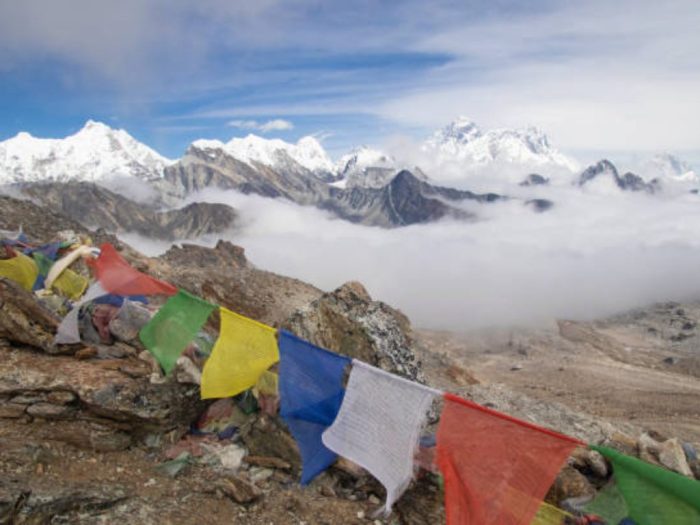
From the verdant forests and waterfalls of the lower altitudes to the moon-like scenery of the high passes, the Everest Three Passes Trek from Salleri highlights the varied splendor of the Everest region. The feeling of accomplishment upon realization of this trek is second to none, thus making it a lifetime experience for adventurers. Whether you’re drawn by the thrill of crossing the three passes or the allure of the Himalayan giants, this trek promises a lifetime of memories and breathtaking scenery at every step.
Best time to Visit Everest Three Passes trek from Salleri
The best time to visit the Everest Three Passes trek from Salleri varies with each season, offering unique experiences throughout the year. In the Spring Season, from March to May, you’ll witness blooming rhododendrons and clear skies, making it ideal for trekking with pleasant temperatures. Summer, from June to August, brings lush greenery but also the monsoon rains, which can make trails slippery and challenging.
Fall from September to November, is a popular time with stable weather, clear views, and colorful landscapes as the foliage changes. Finally winter, from December to February, offers quite trails and snowy scenery. But be prepared for colder temperatures and the possibility of some passes being closed due to heavy snow.
Each season has its charm, so choose the time that best suits your preferences and trekking style for an unforgettable Everest Three High Passes adventure! However, it’s important to note that weather conditions in the Everest region can be unpredictable, so it’s always a good idea to check the weather forecast and be prepared for changes.
Difficulty level; Landscapes, Terrain and Altitude
The Everest Three Passes trek from Salleri is considered a challenging trek, a good level of physical fitness and trekking experience. The trek involves crossing three passes, which can be physically demanding. The terrain is rugged and steep at times, and you’ll be trekking for almost hours each day. It’s important to be prepared, physically and mentally, and to take proper for altitude sickness.
The landscapes you’ll encounter are breathtaking, with towering peaks, terrain, and serene valleys that will leave you in at every turn. The terrain varies from rocky paths to snowy slopes, demanding both physical endurance and mental resilience.
At high altitude, the thin air can make each step feel more strenuous, need acclimatization and careful pacing to prevent altitude sickness. The altitude adds an extra layer of difficulty, but the sense of achievement when conquering each pass is unparalleled. Despite the challenges, the stunning views and the sense of accomplishment make the Everest Three High Passes an once-in-a-lifetime experience for adventures seeking a true test of their skills and spirit all over.
Healthy Food and Accommodation at Everest Three Passes trek from Salleri
When it comes to tackling the Everest Three Passes trek from Salleri, food and accommodation are crucial aspects of the journey. Along the challenging trails, you’ll find the tea houses and lodges offering a variety of meals to fuel your adventure. These cozy lodgings provide a warm beds and heartily meals allowing you to rest and recharge for the next day’s trek. The local cuisine, such as Dal Bhat and Sherpa strew, not only satisfies your hunger but also gives you a taste of the region’s rich flavors.
Staying in these tea houses lets you immerse yourself in the mountain culture, connecting with some trekkers and sharing stories of your high altitude escapades. Its unique experience that blends comfort with the thrill of high-altitude exploration, making your Everest Three High Passes journey truly unforgettable!
Monasteries
Exploring the monasteries along the Everest Three Passes trek from Salleri is a spiritually enriching experience. Some notable monasteries you might encounter include Tengboche Monastery with stunning mountain views; Thame Monastery, known for its peaceful setting and cultural significance; and on e of the oldest monasteries in the region with intricate artwork and a serene atmosphere.These monasteries offer glimpse into the rich religious and cultural heritage of the Himalayan region, adding a profound dimension to your trekking adventure.
Local village
The local village along Everest Three Passes trek from Salleri is like hidden gems waiting to be discovered. Each village has its own charm, offering a glimpse into the traditional Sherpa way of life. From Namche Bazaar, a bustling Sherpa town known for its vibrant market and stunning mountain views, to Dingboche, a picturesque village surrounded by fields and stone walls, every village has a story to tell.
As you trek through these villages, you’ll encounter warm hospitality, colorful prayer flags fluttering in the wind, and cozy tea houses serving delicious local cuisine. The sense of community, the simplicity of life, and a breathtaking backdrop of the Himalayas make the experience of visiting these local villages truly magical.
Costs and Worth
When it comes to the costs and worth of trekking the Everest Three Passes trek from Salleri, it’s essential to consider the overall experience you’ll gain. While the trek may involve expenses like permits, guides, accommodation, and meals, the breathtaking views, cultural immersion, and personal growth make it truly priceless. The sense of achievement, the bond with nature, and the unique encounters with local communities along the way add immeasurable value to the journey. So, despite the costs, the worth of embarking on the Everest Three High Passes trek is beyond monetary value-it’s an investment in unforgettable memories and a deeper connection with the majestic Himalayas.
Guide and Porter Everest Three Passes trek from Salleri
Guides and porters are essential for trekking and mountaineering expeditions here. They are friendly and helpful, with a ready-to-serve attitude at all times, they enhance the safety of trekkers and ensure responsible, as the guides are trained to handle emergencies and are well-versed in local terrain and culture.” They can deal all diplomatically with the local problems and conflicts if raised accidentally.Porter will carry up to 10 kg or 15 kg per client. If you wish , you may keep your clothing and items in a storage on room where you are stay on Kathmandu hotel.
Travel Insurance for a Safe Everest Three Passes trek from Salleri
An insurance plan is an necessary factor in the Everest Three Passes trek from Salleri. Accidents, illness, injuries, stolen or lost baggage, natural calamities, and other unforeseen circumstances they are a potential risk of altitude. A proper insurance plan that includes Helicopter rescue and coverage up to 6,000 m above sea level.
Preventing Altitude Sickness (AMS):
- Rest Well: Ensure that you rest well before starting your trek.
- Stay Hydrated: Continue drinking plenty of water during the journey.
- Balanced Nutrition: Maintain the balance of salt and sugar through proper eating habits and not skipping meals.
- Keep Warm: Layer up to remain warm without profuse sweating.
- Controlled Breathing: Breathe deeply and steadily from your diaphragm to maximize lung capacity. Maintain a comfortable walking speed that will allow for controlled breathing. Nasal breathing avoids drying your throat—wearing a muff or scarf in high altitudes might be of use.
- Pace Yourself: It’s not a competition. Pace yourself with a maintainable andServer consistent pace instead of exhausting yourself too early and taking many rest stops. Stop and admire the stunning views.
Khumbu Rural Municipality Permit
The Khumbu Rural Municipality Permit is the new Trekkers Information Management System (TIMS) Card for trekkers in the Khumbu area. The cost of the permit is as follows:
- For foreigners (including SAARC countries) for the first 4 weeks: NPR 2,000 per person
- For foreigners from beyond 4 weeks: NPR 2,500 per person
You can obtain this permit at the check post counters of Monjo or Lukla from the Khumbu Pasang Rural Municipality Office. Don’t forget that you have no other offices in Kathmandu where you can obtain this permit. But representatives of Nepal Holiday Treks and Tours can help obtain this permit to make your job easier.
Sagarmatha National Park Entry Permit
Since Everest Base Camp is located within Sagarmatha National Park, the trekkers need to pay an entry fee to access this protected area. The Sagarmatha National Park Entry Permit fee is:
- For foreigners: NPR 3,000 per person
- For SAARC nationals: NPR 1,500 per person
- For Nepalese: NPR 100 per person
This permit can be obtained at the Nepal Tourism Board Office in Kathmandu or at Sagarmatha National Park Entrance Gate in Monjo.
Optional Activities to Include in Your Stay in Kathmandu Prior to or Post Your Everest Trek
Nepal Holiday Treks and Tours provides a number of interesting activities to enrich your stay in Kathmandu. These activities offer an understanding of the culture of Nepal and Himalayan way of life. Some of the activities are:
- Kathmandu City Tours – Visit the capital’s renowned temples, historical sites, and cultural symbols.
- One Day Hike – A great method to acclimatize for your trek and enjoy the surrounding natural beauty of the city.
- Jungle Safaris – Encounter Nepal’s flora and fauna by visiting national parks like Chitwan.
- Ethnic Cooking Classes – Get to learn hands-on how to prepare Nepali traditional food.
- Yoga Sessions – Unwind and refresh prior to or after your trek.
- Orphanage and Local Community School Visits – Volunteer back to the local communities by visiting and serving for their welfare.
Personal Services for Your Everest Trek
In case you would like a more personalized experience, we also have personalized services available to suit your needs, which include:
- Personalized Itineraries – Personalize your 13-day Everest Base Camp Short Trek according to your preferences.
- Guide and Porter-Only Service – For people who want to organize the accommodations and meals on their own.
- Accommodation-Only Services – Book your Everest Base Camp Short Trek accommodation as needed.
- Transport Services – Car service from Kathmandu to Ramechhap for your convenience.
- Hotel Options – Accommodate at 4-star or 5-star hotels, or budget hostel services according to your desire.
- Comfortable Accommodation – Sleep in lodges with amenities like electric blankets and en-suite bathrooms.
Everest Three High Pass Trek From Salleri Highlights
- Climb to the Three High Passes of Kongma La (5535m), Cho La (5420m) Renjo La (5345m)
- Visit the holy grail of trekking destinations; the incomparable Everest Base Camp
- Explore the glacial lakes of the Gokyo Valley
- Have an adventurous yet, challenging time while crossing three passes
- Take delight in the breathtaking panoramic views of Everest from Kala Patthar
- Experience the unique culture of the Sherpa people
- Lodge trekking with full support crew
- Also, enjoy the breathtaking views of super Gokyo valley, giant Ngozumpa glacier, and the spectacular view of Khumbu Himalayas.
- Cross the 3 beautiful high elevation passes-Kongma La Pass, Cho La Pass, and Renjo La Pass–of Everest Region.
- Explore UNESCO World Heritage Sites: Pashupatinath Temple, Swyambhunath Stupa, Boudhanath Stupa, and Patan Durbar Square.
- Hike the world‘s most renowned viewpoint of Everest, Kalapatthar & Gokyo Ri viewpoint, and explore the 360-degree panoramic views of mountains.
- Trek through an alpine forest in Sagarmatha National Park and explore the life of rare flora and fauna.
Important Notes
Nepal Holiday Treks and Tours Pvt. Ltd. has years of experience with Himalayan trekking and can help make some enduring memories for you as a visitor. For a comfortable and laid-back trekking experience, we have optional services for which you may choose below.
Weather Condition during Trek
The flight to Lukla is greatly dependent on fine weather and smooth conditions. Instable changes in weather usually bring in delays or postponements that might extend your trekking program. To cater for any unforeseen interruptions, we strongly recommend additional buffer days being included into the itinerary.
For long flight delays, helicopter transfer is also possible, but this comes at an additional cost and is not included in the general trek package. While helicopters do get to fly in some instances when planes cannot, extreme weather conditions will also see them grounded. If it becomes necessary, we can arrange a helicopter charter, although this is limited and on the basis of weather, as this too can cause delays.
Your tact and wisdom in such a situation are greatly appreciated. If the flights are grounded for a long period of time, another option is to drive by car to Tham Danda—a 20-hour grueling ride—where the trek can begin. But this trail too has its difficulties, particularly in inclement weather, with the necessity of added days and patience. If it becomes impossible to trek to Everest Base Camp due to recurring weather patterns, we can offer alternative trekking routes, such as Annapurna Base Camp or Langtang Gosainkunda. Although these routes do not end at Everest, they provide beautiful scenery and a rewarding trekking experience.
We thank you for your flexibility and understanding in dealing with these uncertainties, ensuring a worthwhile experience regardless of which route is taken.
Optional Add-Ons Available:
✅ Porter Service – USD $Let’s relax and stroll in comfort! Our porters are professional and can handle a maximum of 25 kg of luggage, which can be shared between two travelers. Enjoy the stunning views without the burden of heavy gear.
✅ Private Jeep Transfers – USD $
Enhance your trekking experience by taking a private jeep transfer to and from trek starting points, in a comfortable and hassle-free manner without using public means of transport.
✅ Helicopter Return Facility – USD $
For those on a time crunch and seeking a luxurious end to their trek, we offer helicopter return services from top locations such as (Everest region). Enjoy thrilling bird’s eye views of the Himalayas while saving travel time.
✅ Upgraded Accommodation – USD $
Upgrade your trek with enhanced lodges having attached bathrooms strategically located. Enjoy more comfort and relaxation after tired trekking days.
✅ Extra Night in Kathmandu – USD $/night
Early arrival or extended stay? Add extra nights at our partnered 3-star hotel in Kathmandu, with breakfast, to relax prior to or post-trekking.
How to Customize Your Trek:
- Choose Your Trek Departure Date.
- Specify the Number of Travelers.
- Click ‘Book Now’ or ‘Add to Cart.’
- Choose Your Preferred Add-on Options.
- Complete Your Booking and Payment.
Required Experience:
This trek is ideal for active trekkers who can hike 6 to 7 hours a day carrying a light daypack. On certain days, the trekking is longer and the altitude increases the difficulty level of trekking. The trails are generally good, but there could be boulder and uneven patches in between.
Itinerary and Schedule: We try to follow the itinerary planned; yet trekking in distant mountain regions means uncertainty. Factors such as weather and trekkers’ well-being may make readjustments necessary. Your guide and Sherpa crew will try to stick to the trail as designed but flexibility is a must. Your safety is our topmost priority and also to get you back to Kathmandu before your scheduled departure.
What will the temperature be like during trek?
Weather conditions can vary significantly depending on the season and can change rapidly, especially at higher elevations. If your trek takes you above 3,000m, you should be prepared for temperatures ranging from -10°C to 25°C in a single day. It’s essential to have proper protection against sun exposure and strong winds. For helpful weather insights, refer to reliable source. Feel free to reach out to us for a recommended packing list tailored to your trekking itinerary.
How much money should be we bring?
You’ll require Nepali Rupees for any expenditure not covered by your package itinerary. Such costs might include bottled water, night hot shower, extra snacks, extra hot drinks, repairing or replacing equipment, battery charging, souvenirs, and tips. In case you want to shop, Thamel is an excellent place to shop on your last day. You are welcome to come to our office prior to your trek for individual counsel and assistance with money exchange
Fill your life with adventures, not things. Have stories to tell, not stuff to show. Hurry up! Adventure is waiting for you and mountains are calling you.
This trip is fully customization. Importantly, this trip is available on both a fixed departure and a private group basis. Moreover, we can also customize the trip as per your needs, please contact us at Whatsapp (+977-9843770916) or email us at [email protected]. Let us know how we can help you, and we will do our best to give you the best customer service you’ll get anywhere else.
Furthermore, Nepal holiday treks and tours Pvt. Ltd. is a reputable and reliable company serving relentlessly in the field of tourism to fulfill the dreams of diverse adventure seekers around the globe into reality where they can feel most alive. So, we recommend you to reserve seat for yourself by booking with us right away for a wonderful and unforgettable trip experience.
Everest Three High Pass Trek From Salleri Itinerary
Expand allDay 01: Drive to Salleri, 8-9 hrs by jeep
Depart from Kathmandu in the morning and take a jeep or bus to Salleri. The drive takes around 8-9 hours approx. the trails lead through beautiful villages, lush forests, and winding mountain roads to reach our destination for the night. It is a fantastic choice for the September to December and March to May trekking seasons. These time frames will provide clear skies, stable weather, and beautiful views of the Everest region.
Day 02: Salleri to Nunthala (2200m), 6-7 hrs walk
In the journey of Everest three-pass treks, today is your first trek.Today is comparatively the easy and comfortable day of the trek as we pass through small streams and hilly gorges. We’ll cross the pine trees and reach the traditional village of Ringmo. We then incline toward Takshindo Gompa. At Takshindo, you can visit the Gompa and the old cheese factory. After descending from here, you will reach Nunthala.
Day 03: Nunthala to Kharikhola (2985m), 5-6 hrs
After breakfast, continue your trek with a gentle descent, passing towards the Dudh Koshi River. Walking through the trail adorned with colorful Buddhist flags, you will climb to Kharikhola.
Distance: 8 miles/ 13km
Day 04: Kharikhola to Paiya (2770m), 6-7 hrs
Today’s trek will be adventurous. We’ll pass through rhododendron and oak forests with some tea shops and scattered Sherpa settlements along the way. The breathtaking views of the Himalayan panoramic vista include Cho-Oyu, Gyangchung Kang, Numbu, and Thamserku mountains.
Passing through lush woodlands, you’ll arrive at Paiyu village. Since the village lies in the middle of the forest, the views and the cold breeze coming from the forest are very refreshing. Stay Overnight.
Day 05: Paiya to Phakding (2610m), 6-7 hrs
The trek from Paiya to Phakding descends to Surke, where you can witness Lukla to your north. The trail passes several villages, forests, and suspension bridges. You might even spot yaks peacefully grazing, their floppy coats blending with the natural colors of the mountains.
We’ll reach Phakding, stay in a comfortable teahouse, warm up by the crackling fireplace, and treat you to a comforting cup of yak butter tea – the perfect way to wrap up a rewarding day on the trail. Stay Overnight.
Distance: 22 miles/35km
Day 06: Phakding to Namche Bazaar (3440m), 5-6 hrs
The day starts with good scenic walking along the trail through lovely villages, particularly Benkhar. The Dudh Koshi River is followed and crossed at the Hillary suspension bridge. In Manjo, we will enter the Sagarmatha National Park where our permits will be checked. Lunch will be on the way.
Distance: 4miles/ 6.5km
Day 07: Rest Day at Namche Bazaar/hike to Everest View Hotel
Today is a day to let the body acclimatize as we have quickly ascended in altitude. The best way to acclimatize is to be active. Either by exploring Namche, you can walk around the Khumjung valley, Hillary School, and Khunde hospital.
Here you can find Khumjung Monastery, which dates back hundreds of years, although it was reconstructed after the 2015 earthquake. We will also hike up to Syangboche Airport and the Everest View Hotel, one of the highest-placed hotels in the world. From this point, we can see rewarding views of the Himalayas, including Mt Everest. after exploring we’ll back at guesthouse.
Distance: 3miles/5km
Day 08: Namche to Tengboche (3870m), 5-6 hrs
Throughout the Everest trek route, Tengboche Monastery is the main attraction for trekkers, mountaineers, and everyone else, which sits on a hill at the confluence of the Dudh Koshi and the Imja Khola. We’ll climb a series of switchbacks to earn a marvelous look at the mighty summits of Everest, Lhotse, and Ama Dablam.
Set amongst impossibly scenic Himalayan Mountains, the monastery is the largest of its kind in all of Khumbu. The fields are walled to protect crops from icy winds and animals during the short growing season. After admiring the stunning artistry of its murals and sculptures, we’ll return to our guesthouse to spend the night.
Distance: 5 miles/ 8km
Day 9: Tengboche to Dingboche (4360m), 5-6 hrs
After having breakfast, you’ll head out to Dingboche. Traditional Sherpa settlements, nunneries, monasteries, mani stones, chortens, yaks, and wildlife pastures are the best features of the Tengboche to Dingboche hiking route.
Along the trek, you will pass by the village of Pangboche as well as the famous mountain of Ama Dablam, surely making this a memorable day of your hiking experience. After then reaching Dingboche for the night stay.
Distance: 6miles/10km
Day 10: Dingboche to Chhukung (4730m), 3-4 hrs
Today’s route is shorter and gentler than the past few days, but the mountain scenery is no less impressive. You can see the Imja Tse summit, which has a rocky and frosty aspect. In a short while, a dramatic view of Island Peak is offered.
The trail then continues to Bibre, a yak herdsman place. Directly across the valley are Ama Dablam and the Amphu Labsa mountains, while the trail ahead is intersected by icy streams. Soon after, within an hour of walking from Bibre, we arrive at Chhukung for stay. It is a great option for the September to December and March to May trekking seasons. This route offers beautiful views and a good opportunity for acclimatization before tackling the higher passes.
Distance: 3 miles/ 5km
Day 11: Acclimatization at Chhukung/ hike to Chhukung Ri
Today the day is devoted for further acclimatization. The air level is getting thinner, so you need to adjust to the increasing altitude. But that doesn’t mean you have to sit still. If you didn’t make it to Chukkung Ri yesterday, a sunrise hike to the viewpoint to watch dawn break across the Himalayas makes for an experience you won’t forget
However you choose to spend the day, we’ll return to Chhukung in the afternoon to prepare our supplies for tomorrow and to spend another night.
Distance:1 miles/ 1.6km
Day 12: Lobuche via Kongma La Pass (5545m)
Today, you need to walk quite a bit longer than earlier times. After descending from Chhukung through Kongma La Pass, in Lobuche, you will envelop the ice-covered river in the Thukla glacier and ascend the hill to witness the glorious views of Cholatse, Lobuche, Nuptse, and Pumori. Plus, the blue glacier walls seem to inspire the neighboring buttresses to stand strong and proud on their fee.
The whole mountain families appear extraordinary from the Kongma La Pass, where you’ll get to see some of the best views of the Everest region. Mountains, glaciers, iced lakes, valleys, hills – you can capture the whole horizon from there. After enough time at the top, you will descend through a stone and rough trail towards Lobuche. Your overnight stay will be there.
Distance: 3 miles/ 5km
Day 13: Trek to Gorak Shep (5140m) / Hike to Everest Base Camp (5364m)
On this day, you’ll finally be at the base camp, which will definitely make you proud and excited to be near the top of the world. 2-3 hours after leaving Lobuche, you’ll arrive in Gorak Shep, the final settlement before the base camp, with views of the Khumbu glacier and mountains. Starting the trek again from Gorakshep to Everest Base Camp, we’ll pass through rocky dunes, moraines, and streams before reaching the base camp of the world’s tallest mountain, Everest. From there, we’ll admire Nuptse, Khumbuste, and Pumori Mountain.
It’s a historic moment in itself to be able to trek up to Everest Base Camp. After spending some proud and beautiful moments at the base camp, you will return to Gorak Shep for the night stay.
Distance: 3 miles/ 5km
Day 14: Gorak Shep via Kalapatthar (5550m) then Lobuche (4940m)
The hike from Gorak Shep to Kalapatthar is challenging but totally worth it for the incredible views. The hike remains difficult with increasing altitude and unmarked trails. This will be one of the loveliest days for us as we ascend towards 5545 meters to explore the mighty Himalayas.
After some time, we’ll reach Kala Patthar. Kala Patthar is not a very scenic mountain itself, but it is perhaps the best location to view Mount Everest without doing technical climbs. The views you will see will be unlike anything you have ever experienced. We’ll enjoy the stunning Himalayan vista and descend to Lobuche, where we will stay the night.
Distance 3miles/5km
Day 15: Lobuche to Dzongla (4830m)
Our journey from Lobuche to Dzongla offers us more stunning views without the crossing of glaciers, schlepping up high passes, or testing our limits with extreme altitude. We’ll pass by a stupa and tombstones in the distance. On the way to Dzongla, you’ll also enjoy the scenic Cho Tsho Lake along with the greatest views of mountains like Mt Everest, Mt Nuptse, Mt Pumori, Mt Ama Dablam, and many more.
We can better admire the view of the looming Awi Peak. We continue further and pass another lake, which is smaller than Cho La Lake. We cross the Chola Khola on a bridge before reaching Dzongla. Stay overnight at Dzongla.
Distance: 2 miles/3km
Day 16: Dzonglha to Dragnag (4700m) via Cho La Pass (5837m)
Today our route will take us from Dzongla to Dragnag via Cho La Pass, one of the more technical of the popular “Three Passes”. Starting our trek, you will get some stunning views of the surrounding mountains and landscape, but you will also trek on an actual glacier. The Cho La Pass is the highlight of the day’s trek, with dramatic views of snow-capped peaks appearing that we have never seen before.
While following these ascents and descents, we take proper care of ourselves to avoid any risks of being injured as there may be slippery ice glazed around rocks. In this way, after a short while, we’ll finally arrive at Dragnag where we will be staying overnight.
Distance: 3miles/5km
Day 17: Dragnag to Gokyo (4790m)
Today’s trek is short but provides some of the most picturesque views and landscapes we have ever seen. You will hike towards the north to get to Gokyo and move further on the trail above the tree line. You’ll walk alongside the Ngozumpa Glacier and descend towards it.
The panorama of the Himalayas and the view of the glacier and lakes look spectacular from there. We can relish the wonderful environment. After then we’ll be in Gokyo for night.
Distance: 2 miles/3km
Day 18: Acclimatization day at Gokyo and hike to Gokyo Ri(5357m)
on this day, you’ll take a break from trekking and spend an extra day in Gokyo to allow your body to adjust to the high altitude. During the acclimatization day, you have couple of options to make the most of your time. and after having breakfast we’ll hike to gokyo ri, a viewpoint that offers breathtaking panoramic views of the surrounding mountains, including Everest, Cho Oyu and Makalu. The hike up to Gokyo Ri is quite steep, but the views from the top are absolutely worth it! you can also take a leisurely walk around the lakes, enjoy the tranquil atmoshphere, and soak in the natural beauty of the surrounding. After exporing we back to Gokyo for night stay.
Distance: 1mile/1.6 km
Day 19: Gokyo to Lungdhen (4380m) via Renjo Pass (5360m)
We trek from Gokyo to Lungden via Renjo La Pass, which will take quite a hike with some rest in between. You can look into the distance and spot prayer flags that mark the Renjo La Pass. The trail leads with a steep, requiring cautious steps through the challenging terrain, strewn with loose stones.
The colossal 8000-meter peaks appear remarkably close, providing some of the most remarkable views of Mount Everest along any Everest trail. Afterward, the trail descends toward Lungden for the overnight stay.
Distance: 2 miles/3km
Day 20: Lungdhen to Thame (4636m)
Lungdhen village is nestled at the base of a massive hill, receiving sunlight later in the morning. The journey from Lungdhen to Thame involves relatively easy terrain with numerous switchback ascents. Upon crossing the water stream, we trek for 2-3 hours to reach Thame village.
Tenzing Norgay Sherpa, who, with Edmund Hillary, first climbed Mount Everest, spent his childhood here. We’ll visit the historic Thame Monastery and experience spiritual Buddhist practices as well. Stay overnght at Thame.
Distance:3 miles/5km
Day 21: Thame to Namche Bazaar (3440m)
After having breakfast, it’s time to trek back to Namche. You will pass through other Sherpa settlements and forested trails before reaching Namche Bazaar. The scenery looks absolutely different on the return journey as well. We trek past Tengboche and reach Namche Bazaar. It is bonus time to explore there, if you missed out on the first encounter.
Distance:6 miles/10km
Day 22: Namche to Lukla (2840m)
Today is our final day of the Everest Three High Pass Trek. The trail involves a steep descent with several river crossings. You’ll retrace your journey along the same trail, passing through Jorsalle, Manjo, and Phakding before ultimately reaching your overnight stop in Lukla.
Distance: 9 miles/15km
Day 23: Fly back to Kathmandu
Shortly after breakfast, we head back to Kathmandu after our long and grueling mountain adventure. During this flight, you can still enjoy the view of the mountains. Most likely, you will be thinking back on our trip to Everest Base Camp and back home. After arriving in Kathmandu, you will be transferred to your hotel.
If the above Everest Base Camp Trek itinerary does not meet your needs, we can design individualized travel plans based on your preferences and specifications.
Plan My TripEverest Three High Pass Trek From Salleri Cost Includes
- Three times Three meals a day- Breakfast, Lunch, Dinner and 3 cup’s of tea/Coffee a day during the trek.
- Accommodation in tea house during the trek.
- Sagarmatha National Park Permit, TIMS Card, and Khumbu Pasang Lhamu Municipality Entrance Permit.
- In a day time tea break with cookies every day.
- Seasonally fruits and desserts on the trek after dinner every day.
- All ground transport in local vehicles including airport transfers domestic arrivals and departures (Private transport accommodation can be organized at an extra cost).
- Nepal Holiday Treks and Tours, (-20 degree sleeping bag) and a duffel bag for the trekking, but you need to refund to the office after the trip.
- An experienced, helpful, knowledgeable, friendly, English speaking well trained, government license holder Trekking Guide with all his salary, food, Drinks, accommodation, equipment, transport, and insurance.
- From Kathmandu to Salleri and Salleri to Kathmandu by local Transportation.
- Normal First aids kit box.
- You will be under observation with a pulse oximeter to have your oxygen levels and heart rate measured twice a day during the trek. This is to catch the signs of Altitude Mountain Sickness (AMS) early, thus making trekking safer.
- Nepal Holiday Treks And Tours trip completion certificate from the company side.
- 3 nights accommodation in Kathmandu (3 star hotel) on the BB plan, 1 night before starting the trek and 1 night the day after returning from the trek.
- Guided Kathmandu UNESCO World Heritage Site excursion in private transport with a professional tour guide
- Arrangement of Emergency helicopter service (paid by your travel insurance company).
- All the administrative expenses and government taxes.
Everest Three High Pass Trek From Salleri Cost Excludes
- International airfare and visa fees
- Accommodation and foods in Kathmandu
- Airport pickup and drop service.
- Personal expenses such as phone calls, laundry, battery recharge, hot shower, extra porters, etc.)
- Your trekking gears and extra nights in a certain destination
- Your travel insurance which should include the emergency rescue
- Tips for your guide and porters which is compulsory.
- A strong, helpful, porters with proper safety equipment and walking equipment his salary, food, drinks, accommodation, insurance, (one porter for two people he will carry bag pack max 20-25kg).
- Entrance fees in UNESCO Heritage sightseeing in Kathmandu
- Extra night/s of accommodation in Kathmandu because of early arrival, late departure, early return from the mountain (due to any reason) than the scheduled itinerary.
- Extra expenses due to any event such as strikes, weather conditions, or flight delays
- Equipment (Sleeping bags and down jacket, trekking poles etc)
- Nepal Entry Visa (Visa can be obtained easily after your arrival at Tribhuvan International Airport in Kathmandu with a fee of USD 30 for 15 days visa, USD 50 for 30 days visa and USD 125 for 90 days visa).
- Rest of the expenses which are not mentioned on Price includes.
- Donations for local people, hospitals, schools (not compulsory).
Upcoming Departures
Customer Reviews
Write a ReviewEverest Three High Pass Trek From Salleri FAQs
What is the distance of trekking on the Everest Three Passes Trek?
Everest Three Passes Trek stands at 103 miles (166 km) and takes up to 20–23 days. The trek begins from 2,362 meters in Salleri, goes up to 5,364 meters at Everest Base Camp, and finally reaches its end at 2,880 meters in Lukla. Expect quite an adventure with great views of Mt. Everest, Lhotse, Ama Dablam, among others.
What additional documents do I need for trekking in Nepal?
You will be needing a valid passport, a visa for Nepal, and trekking permits like the Sagarmatha National Park Permit and TIMS card. Similarly, highly essential is travel insurance that covers high-altitude trekking and helicopter evacuation. Get your Lukla flight tickets ready and some passport-sized photos for permits.
How does paying for a private helicopter charter work?
It is always a good idea to book your private helicopter charter in advance through an operator, with a deposit paid upon booking and the remaining balance due before flight. Pricing will depend upon route, length of flight, and head count. Travel insurance that covers helicopter evacuation is suggested.
How do I get a special permit for the Three High Passes Trek?
The three permits that are needed for the Three High Passes Trek are the Sagarmatha National Park Permit, the TIMS Card (Trekkers’ Information Management System), and the Khumbu Pasang Lhamu Rural Municipality Permit. These permits are indispensable when one is to enter the protected areas and can be attained via a licensed trekking agency in Kathmandu or Lukla. Your agency will look after all the necessary documentation and permit fees.
Do guides speak English?
Yes, most licensed trekking guides in Nepal speak fluent English. If you want, another language guide, like French or Spanish, will be arranged previously.
Is a guide a must for the Three High Passes Trek?
Yes, you need a guide compulsory due to trek on Three high passes trek because the direction or way they will guide you to move forward and have you happy safe journey.
What happens in case of flight no-show, or disruptions owing to bad weather?
Most flights from Lukla are generally disturbed or canceled due to weather conditions. If the flight is missed or delayed in Lukla, mostly there is an option to rebook the ticket. Having flexible schedules with buffer days will help manage such disruptions. The availability of helicopter service at extra cost can be arranged where the weather condition permits. You are very welcome to use road travel from Ramechhap as an alternative.
What if my flight is delayed/canceled due to weather conditions?
In case of delays or cancellations of Lukla flights due to weather, you should be in close contact with your trekking agency and an airline company. You can either wait for the next flight or take helicopter transportation if it is available. It is better to have some extra days in your itinerary so that any loss arising from bad weather can be accommodated.
How many days does the Three High Passes Trek take?
The trek usually takes approximately 16–18 days, depending on your pace and acclimatization schedule. The route involves several challenging days of trekking, especially at higher altitudes, so the duration includes necessary rest days to acclimatize to prevent altitude sickness.
What are the options for accommodations during the trek?
Accommodation along the Three High Passes Trek consists of teahouses or lodges. These usually include shared rooms with a bed, food, and sometimes shared or cold bathrooms. At higher altitudes, the lodges can be more basic, yet comfortable for trekkers. The higher you go up, the fewer services are available, so prepare for something more rustic.
The main difficulties of the Three High Passes Trek are what?
The trek is a bit harder compared to the regular Everest Base Camp Trek due to the high passes one will have to cross: Kongma La (5535m), Cho La (5420m), and Renjo La (5345m). These parts might be steep, icy, and really demand good physical fitness. Besides this, the high altitudes make altitude sickness more probable, and proper acclimatization is necessary.
Everest Three High Pass Trek From Salleri Equipment Lists
General info:
- Sleeping Bag: Four-season sleeping bag with a rating of -20°C by company after you have to give to company.
- Insulated Jacket: A puffy and warm down jacket suitable for winter by company after you have to give to company.
- Daypack: 25-30 liter backpack rain cover to carry one’s daily essentials
Clothing:
- Thermal base layers
- Trekking shirts (quick-dry)
- Fleece jacket and down jacket
- Waterproof jacket and pants
- Trekking trousers
- Gloves (inner and outer)
- Warm hat and sun hat
- Trekking socks
Footwear:
- Sturdy trekking boots
- Camp shoes/sandals
- Gaiters (optional)
Accessories:
- Trekking poles
- Backpack (50-60L) and daypack (20-30L)
- Sunglasses (UV protection)
- Headlamp with extra batteries
- Water bottles and purification tablets
Similar Tours
Short Manaslu Tsum Valley Trek
An 17 days trek, the Short Manaslu and Tsum Valley Trek engages trekkers to an adventure close to Mt....
Gokhyo-Renjola Pass trek
Your getaway from the typical trekking route to Everest Base Camp is the Gokyo Renjo-La Pass Trekking. This trekking...
Jomsom Muktinath Trek
Nepal is a stunning country in the Himalayas with magnificent mountains. These mountains’ foothills make for ideal walking terrain....
Ghorepani-Poonhill-Ghandruk Trek
The sheer grandeur of Nepal’s many landscapes and geographical features makes it unimaginably beautiful. There are many interesting, quaint,...
Khopra Danda Trek with Khayer Lake
One of the most beautiful trekking routes in the Annapurna region is the Khopra Danda Trek. For trekkers who...

